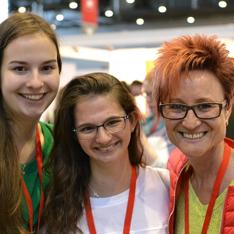Investigate the relationship between activity and cognition during a structured grocery shopping task in older adults with mild cognitive impairment (MCI) and cognitively unimpaired (CU).
Participants included 15 older adults, each with MCI and CU. MCI was diagnosed by a neuropsychologist and CU by the Montreal Cognitive Assessment (>25). Fluid Cognition Composite was determined using the NIH Toolbox Cognition Battery. During a single visit, participants performed five trials of a structured grocery shopping task in a simulated physical store. Trials consisted of using a shopping basket to collect eight items on a shopping list. Participants were outfitted with an action camera and inertial measurement units at the lumbar spine and posterior cranium. Whole trial analysis variables were used as outcome measures. Accelerometer data was analyzed with an actigraphy-based calculation of total activity counts at the lumbar spine and head. Gyroscope data variables included total degrees of movement and angular velocity per minute at the lumbar spine and head. Baseline comparative measures included age, 10m gait speed, and fluid cognition calculated by the NIH Toolbox. Statistics included t-test baseline group differences and linear regression models to test relationships of whole trial variable outcomes and predictor variables of age, 10m gait, cognitive status, and fluid cognition composite.
Age and 10m gait speed were similar between groups (p’s=0.07 and 0.40). Actigraphy-based lumbar and head total activity were not related 10m gait (p’s=0.34 and 0.33); however, fluid cognition explained 9% (p=0.001) and 10% (p=0.003) of the variability, respectively. Significant differences were found between MCI and CU groups for gyroscope degrees per minute at the head (p=0.006, d=0.344) and lumbar spine (p0.01, d=0.56). The full regression model explains 42% variance at the head (p=0.001) and 17.5% at the lumbar spine (p0.001), where significant variables are reduced to fluid cognition.
This study provides initial evidence that objectively measured activity during a real-world cognitive overlay, such as grocery shopping, differs between those with MCI and those with CU. Results indicate that 10m gait activity was not related to overall activity totals and was no different between groups. Interestingly, the composite measure of fluid cognition accounts for a significant amount of the variance in the slowing of head and lumbar rotations. This indicates that as cognition declines, the overall speed of rotational movements, especially at the head, may demonstrate more significant changes in cognition.
Objective measurements of movement using wearable technology during real-world activities, such as grocery shopping, may be an important digital biomarker of cognitive and physical function. Future studies are needed in community grocery stores to assess free-living IADLs to determine if grocery shopping activity can be used as a digital biomarker of cognitive decline.
Wearable Technology
Mild Cognitive Impairment

